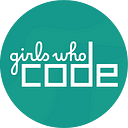#GWCTalks: Accessibility In Tech
We’ve come a long way when it comes to making sure as many people as possible can use tech, especially the tech we use daily, like websites and apps. But how did we get here? What tools made that change possible? And what does a carer making tech accessible look like?
Panelists Sasha Diamond (Corporate Vice President, Web Experiences at New York Life Insurance Company), Lisa McGarthwaite (Staff User Experience Designer at G.E.), and Maria Garcia (User Experience Designer and Strategist at athenahealth) joined our very own Director of Alumni Programs, Emily Moss, on Thursday, July 22 to answer those questions and more.
You can find the full session on YouTube here or read our recap below. Here are a few key takeaways from the conversations:
- Accessibility is a legal matter
One of the first things to know when talking about accessibility in tech, Sasha Diamond pointed out, is that the American Disabilities Act — a civil rights law passed in 1990 that prohibits discrimination against individuals with disabilities in all areas of public life — applies to websites. This means that companies need to make websites accessible not only because it’s the right thing to do but because they’re legally required.
But those guidelines should be a starting point. A good next step, Diamond said, is to challenge “the status quo of what those guidelines are. Looking at them today, I feel like there’s so much more we can address — if you want to be innovative and think of new ideas, there are so many opportunities to explore.”
An even better step? “Actually speak to those who may be in those communities,” and ask them what they need, Diamond said.
2. Inclusion benefits everybody
Accessibility is about “improving how we design overall,” Maria Garcia said. It’s not just about tweaking tech so that it specifically benefits someone with a disability, but “doing those things and keeping those types of users in mind is actually going to benefit everyone overall.”
Take Screen Readers, or tools that convert text, images, and other screen elements into speech or braille. Screen Readers work by reading HTML codes to help a user understand the web page structure, Garcia pointed out. Being cognizant of Screen Readers should only make web designers think better about not only the visual design of the website but also the design of the code, which ultimately makes the website better.
3. UX is a great career path to address accessibility
All of our panelists work in UX (User Experience) and had plenty of advice about starting your career.
“Keep your eyes out on your first job,” Lisa McGarthwaite advised. “Always be aware of the opportunities that exist for you. If you work hard and if you bring up a sound case of why you want to explore something and how it benefits that business, they’re likely to say go ahead and try it, and we want to support you on it.”
“Take the projects that scare you,” said Sasha Diamond. “If you’re not scared, you’re not going to learn. Then you’ll look back as you grow and say, wow, I could actually do that in my sleep now.”
#GWCTalks is a free virtual event series for our alumni and our community, to come together to address uncertainties around college, internships, and careers in tech during the COVID-19 pandemic.
__________________________________
To view prior sessions, see links below:
Session #1: College During COVID-19
Session #2: Career Pathing in a Crisis
Session #3: No Internships, Now What?
Session #4: How to Be Brave Not Perfect in a Crisis
Session #5: The CompSci Class Experience & How to Succeed
Session #6: How to Craft the Perfect Tech Resume
Session #7: Virtual Career Fair Etiquette
Session #8: Your Tech Career Guide
